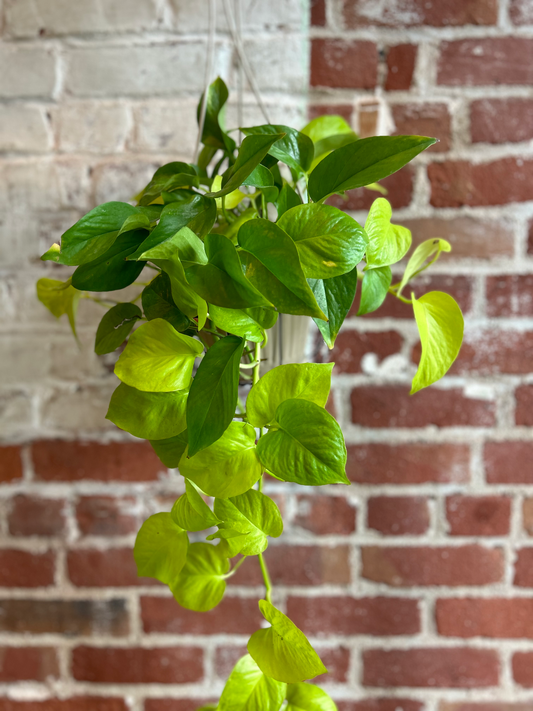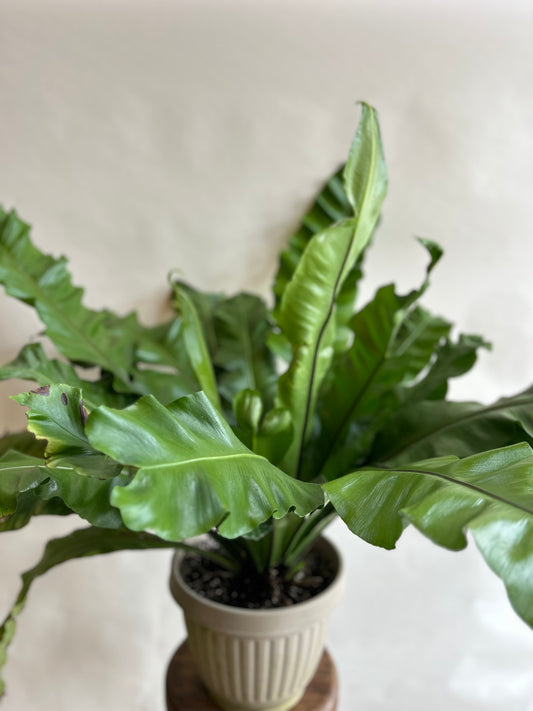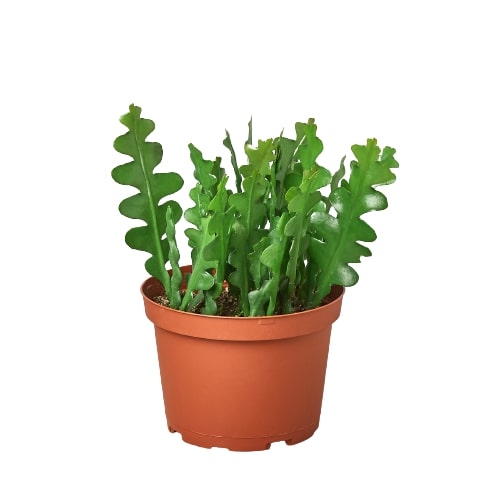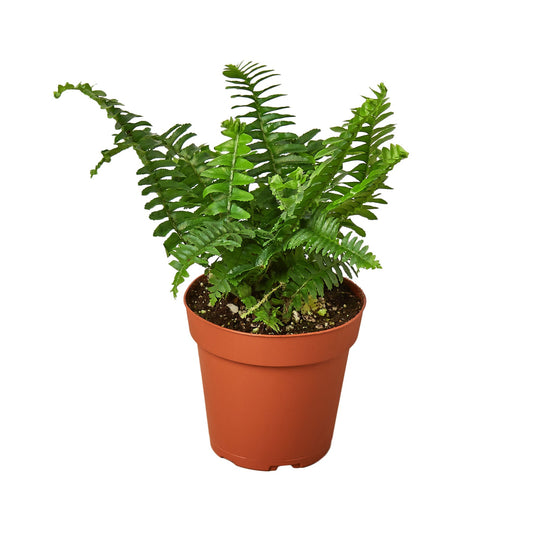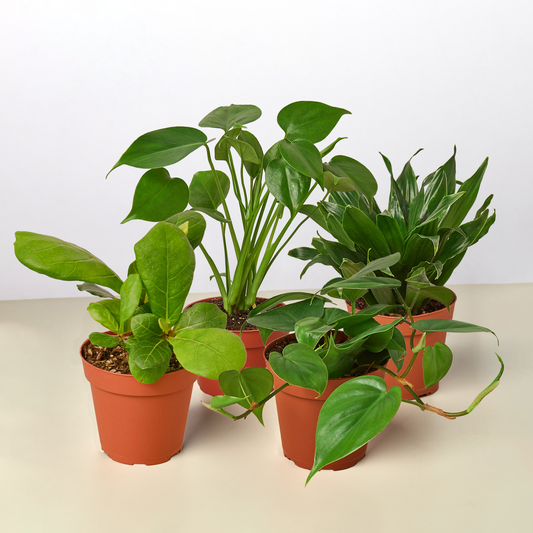Do Cast Iron Plants Bloom? A Guide to Cast Iron Plant Flowers
Cafe Planta Team
Have you ever wondered if your seemingly indestructible Cast Iron Plant (Aspidistra elatior) can surprise you with a bloom? If you're thinking of adding this low-maintenance green friend to your home or if you already have one, you might be curious about its flowering habits. Spoiler alert: it does bloom!
This article will guide you through everything you need to know about Cast Iron Plants and their flowers. You’ll learn about what these blooms look like, how to encourage them, and how they fit into the overall care for this hardy houseplant. Plus, we’ll sprinkle in some tips on integrating them into your home décor. So, let’s get started!
Understanding the Cast Iron Plant
The Cast Iron Plant, known scientifically as Aspidistra elatior, has earned its reputation as one of the toughest houseplants around. If you’re a plant person who’s struggled with keeping greenery alive, this one’s for you. It thrives in conditions where other plants might falter, like low light and minimal watering. But what makes it so enduring?
First off, the Cast Iron Plant hails from the forests of Japan and Taiwan, where it grows under the canopy in low-light conditions. This background makes it adept at surviving in less-than-ideal lighting situations, like those found in many homes. Its leathery leaves are not just for show—they’re a part of its defense mechanism against pests and diseases.
Interestingly, while known for its durability, the Cast Iron Plant is also a slow grower. Don’t expect a rapid transformation; instead, it’s more about steady, dependable growth. This makes it an excellent choice for those who prefer a low-maintenance plant that doesn’t demand constant repotting or pruning.
Do Cast Iron Plants Bloom?
Now to the big question: do these hardy plants actually bloom? Yes, they do! However, the blooms are not your typical showy houseplant flowers. You might even miss them if you’re not paying close attention. Cast Iron Plant flowers are small, purple, and grow close to the soil. They appear at the base of the plant, often hiding beneath the foliage.
The blooms are not the main attraction of the Cast Iron Plant, which is why many plant lovers aren’t even aware they exist. They typically bloom in late spring to early summer, but even then, they’re somewhat shy. If you’re hoping to witness these elusive flowers, you’ll need to provide the right conditions.
While the blooming of the Cast Iron Plant is a rare event, it’s a delightful surprise for those who manage to catch a glimpse. Think of it as a reward for providing your plant with the care it needs, even if that care is minimal.
Encouraging Your Cast Iron Plant to Bloom
If you’re determined to see those blossoms, there are a few things you can do to encourage your Cast Iron Plant to flower. Keep in mind that even with the perfect conditions, there’s no guarantee you’ll see blooms every year, but these tips can increase your chances.
- Light: While the Cast Iron Plant tolerates low light, it does better with indirect light. A spot with moderate lighting can help encourage flowering.
- Watering: Keep the soil consistently moist but not soggy. Overwatering can lead to root rot, which will hinder blooming.
- Temperature: Aim for a consistent temperature between 60-75°F (15-24°C). Avoid drafts and sudden temperature changes.
- Fertilizer: A balanced, water-soluble fertilizer applied monthly during the growing season can provide the nutrients your plant needs to bloom.
Beyond these basics, patience is key. The Cast Iron Plant doesn’t rush its blooming process, and sometimes, it just needs more time to mature and adjust to its environment.
Caring for Cast Iron Plant Flowers
Once your Cast Iron Plant blooms, caring for the flowers is fairly straightforward. Given their close-to-the-ground nature, they don’t require much in terms of special attention. However, there are a few things to keep in mind.
First, avoid disturbing the soil too much around the base of the plant. The flowers are delicate and can be easily damaged. If you’re repotting or doing a deep clean of the leaves, be gentle to avoid disrupting the blooms.
Also, keep an eye out for any signs of pests or diseases, although the Cast Iron Plant is generally quite resilient. If you spot any issues, such as discolored leaves or unusual spotting, address them promptly to keep both the plant and flowers healthy.
Finally, enjoy them while they last. Cast Iron Plant flowers aren’t long-lived, but they’re a unique addition to this already intriguing plant. Take the time to appreciate their subtle beauty while they’re around.
Integrating Cast Iron Plants into Your Home Décor
With or without flowers, the Cast Iron Plant is a fantastic addition to any home. Its lush leaves provide a rich green backdrop that complements a variety of styles, from minimalistic to eclectic. Here’s how you can incorporate it into your interior design.
- Standalone Feature: Use the Cast Iron Plant as a focal point in a room. Its tall, arching leaves make it a statement piece that's sure to catch the eye.
- Group Planting: Pair it with other plants that have similar care requirements. Ferns and snake plants make great companions.
- Decorative Pots: Choose a pot that complements your décor style. Terracotta pots give a rustic feel, while ceramic pots add a modern touch.
- Low-Light Areas: Since it thrives in low light, place it in areas that need a touch of greenery but don’t get much natural light, like bathrooms or hallways.
Remember, the Cast Iron Plant is adaptable, so don’t be afraid to move it around and try different spots until you find the perfect place for it.
Common Issues and Troubleshooting
Even a plant as hardy as the Cast Iron Plant can run into issues from time to time. Knowing what to look out for can help you nip problems in the bud before they become significant.
Yellowing Leaves: This is often a sign of overwatering or poor drainage. Check the soil moisture and ensure the pot has adequate drainage holes.
Brown Tips: Brown leaf tips can indicate low humidity or too much direct sunlight. Try misting the plant or moving it to a spot with less direct light.
Pest Infestations: While rare, spider mites and scale can sometimes make an appearance. A gentle insecticidal soap or neem oil can help manage these pests effectively.
By keeping an eye on your plant and making adjustments as needed, you can ensure it stays healthy and vibrant, ready to bloom when the time is right.
Why Choose a Cast Iron Plant?
You might wonder why the Cast Iron Plant is such a popular choice among plant lovers, especially when it’s not known for showy flowers. The reasons are many, and they go beyond its hardy nature.
For one, it’s incredibly forgiving. If you forget to water it for a week or two, it won’t hold a grudge. It’s also resilient to a variety of indoor conditions, making it an excellent choice for spaces with less natural light.
Additionally, its lush (yes, I said it) foliage adds a touch of elegance and greenery to any space without being overwhelming. Whether you’re a seasoned plant parent or just starting your collection, the Cast Iron Plant is a dependable choice that adds life to your home.
Repotting and Propagation Tips
Repotting a Cast Iron Plant is not something you’ll do often, thanks to its slow growth rate. However, when the time comes, it’s good to know how to do it right.
- When to Repot: Typically, every two to three years. Look for signs like roots growing out of the drainage holes or the plant becoming root-bound.
- How to Repot: Choose a pot slightly larger than the current one. Use a well-draining potting mix, and gently tease out any compacted roots before placing the plant in its new home.
As for propagation, dividing the plant during repotting is the most common method. Simply separate the rhizomes with a sharp knife, ensuring each section has a few leaves attached. Plant them in individual pots, and you’ve got yourself a new Cast Iron Plant.
Final Thoughts
To sum it up, while Cast Iron Plants may not be famous for their flowers, they do indeed bloom. Their understated blossoms are a hidden gem for those who know where to look. With the right care, you might just be lucky enough to see them yourself.
At Cafe Planta, we believe in the power of plants to transform spaces and bring joy to our lives. Whether you're just starting your plant journey or adding to your collection, we’re here to help you with all things plant-related. Feel free to email us or send us a message on Instagram if you have any questions. Let's grow together!


